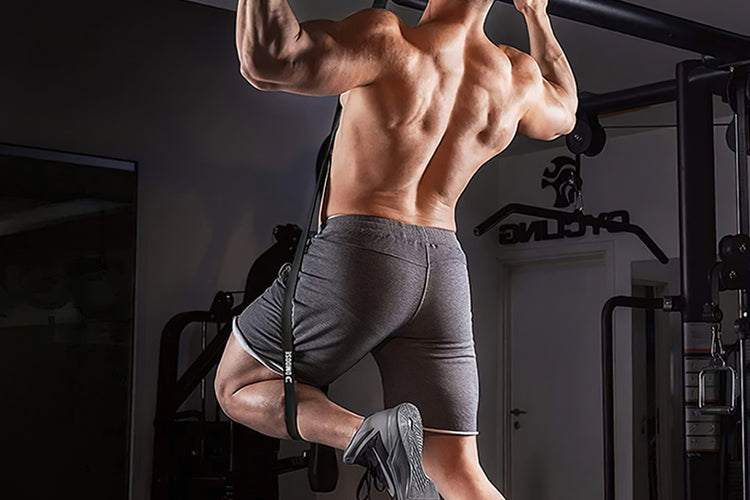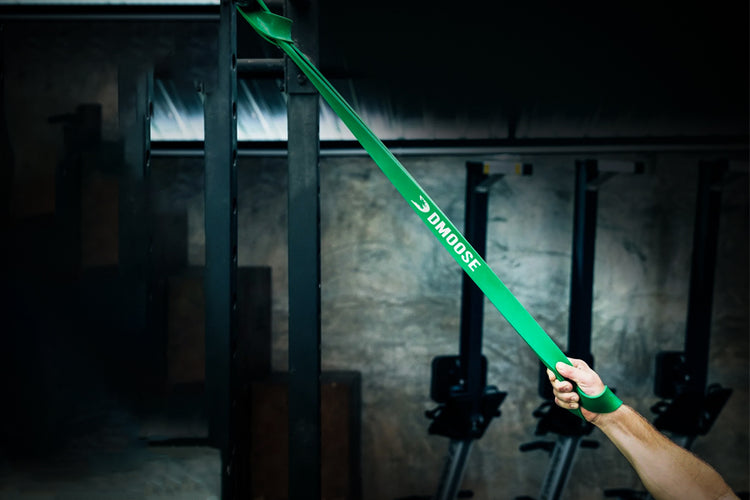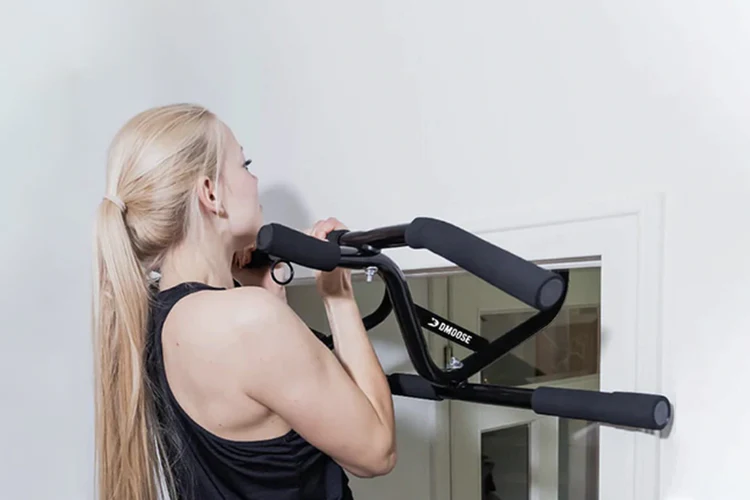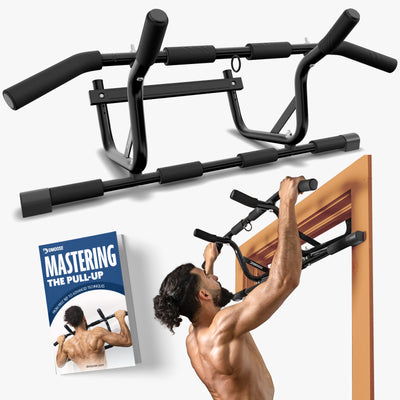Many people hit a plateau doing the same bodyweight exercises over and over, limited by what their setup allows. And while adding weights might sound like the next step, it's not always practical, especially in a home environment. That’s where resistance bands come in.
When used correctly with your Door Pull Up Bar, resistance bands can transform your training. They can support you when you're working toward your first pull-up or challenge you with added resistance as you get stronger.
In this guide, we’ll show you how to integrate resistance bands into your setup safely and effectively, so you can break through plateaus and finally see the progress you’ve been working for.
Why Add Resistance Bands to Your Pull-Up Bar?

Adding resistance bands to your pull-up bar is one of the most effective ways to increase training intensity and introduce more versatility into your workouts. Whether you're working toward your first pull-up or trying to build serious upper body strength, bands can help you reach your goals more efficiently.
Increased Resistance Leads to Greater Muscle Engagement
Using bands allows you to apply controlled tension across the entire range of motion. This added resistance challenges your muscles more effectively, especially in the lats, biceps, upper back, and shoulders. As a result, you can build muscle and strength without relying on heavy gym equipment.
A Smart Way to Implement Progressive Overload Without Weights
Progressive overload is essential for continued muscle growth. Instead of adding more weight, you can increase difficulty by switching to thicker bands or adjusting the length and tension. This makes it easy to scale your workouts and continue making progress, even with minimal equipment.
Introduces Variety into Your Bodyweight Training
Resistance bands expand your training options by allowing both assisted and resisted pull-ups, band rows, and isolation movements such as face pulls or pulldowns. These variations can break through plateaus, add fun to your routine, and target muscles in new and effective ways.
Boosts Core and Stabilizer Muscle Activation
Because resistance bands create continuous tension and slight instability, your body must work harder to maintain control throughout each movement. This leads to improved engagement of the core and stabilizer muscles, helping you build balanced, functional strength over time.
Choosing the Right Resistance Bands

To get the most out of your pull-up bar workouts, it’s important to pair them with the right resistance bands. The wrong choice can limit your range of motion, reduce effectiveness, or even create safety risks. Here's how to choose bands that match your training goals and equipment setup.
Get the Right Resistance Level for Your Goals
Resistance bands come in different tension levels, typically categorized as light, medium, and heavy. Light bands are best for beginners or warm-up routines. Medium bands offer enough tension for strength work and controlled reps. Heavy bands are designed for more advanced movements like resisted pull-ups or explosive rows. Choosing a set that includes all three levels allows you to scale your workouts as your strength progresses.
Use Fabric Bands for Better Grip and Comfort
Fabric resistance bands are ideal for use with a pull-up bar, especially compared to latex bands. They offer a more secure grip against the bar and are less likely to roll, pinch, or slip during training. The material is comfortable against the skin and doesn’t dig in, even during high-tension exercises like banded pull-ups or face pulls. Fabric bands also tend to last longer under repeated stretching, making them a reliable option for consistent use.
Choose Bands with the Right Length and Thickness
Length and thickness both impact performance. A band that’s too short will restrict your movement, while one that’s too long may not offer enough resistance. Thicker bands create more tension, which is ideal for heavy resistance or assisted pull-ups. Look for bands that offer enough stretch for full upper-body range of motion while maintaining consistent tension throughout the movement.
Pick a Material That Matches Your Training Style
Material affects comfort, durability, and safety. Latex bands are stretchy and affordable but may roll, pinch, or snap with regular use. Fabric bands are more comfortable against the skin and tend to stay in place during high-tension exercises. They also provide better grip and are less likely to wear out quickly, making them a smart choice for controlled strength training around a pull-up bar.
Step-by-Step Guide: Attaching Resistance Bands to Your Pull-Up Bar

Using resistance bands properly with a doorway pull-up bar is essential for safe and effective training. Whether you're adding support or resistance, secure attachment ensures stability and better performance. Here's how to do it right.
Step 1. Inspect Your Pull-Up Bar and Band
Before getting started, make sure your pull-up bar is tightly secured and can handle added tension from bands. Inspect your resistance band for any signs of wear, especially around seams and stretch points. Fabric bands are known for durability, but checking for fraying or overstretching ensures long-term safety.
Step 2. Choose the Correct Band for Your Exercise
Select a resistance level that matches your training goal. For assistance-based movements like banded pull-ups, you may want to start with a heavier band. For resisted movements like face pulls or straight-arm pulldowns, a light or medium band will provide adequate tension without compromising form.
Step 3. Loop the Band Over the Center of the Bar
Take your resistance band and fold it in half. Place the folded section over the middle of your pull-up bar. Feed the two loose ends through the looped end, creating a secure lark’s head knot. This knot holds well with fabric material and prevents slipping during training.
Step 4. Anchor the Band for Your Movement
- For Resisted Movements: Face away or toward the bar and hold the two ends of the hanging band. Perform movements such as band rows, pulldowns, or face pulls using steady resistance from the anchored band.
- For Assisted Pull-Ups: Let the band hang down vertically. Place one foot (or knee) inside the loop to help reduce bodyweight during the pull-up. Ensure the loop is stable and the band doesn't shift under pressure.

Step 5. Maintain Control Throughout the Movement
Most resistance bands offer smooth, controlled tension, but it’s still important to move with intention. Avoid jerky motions that could cause unnecessary wear on the band or compromise your form. Keep tension constant and ensure your bar remains secure after each set.
Step 6. Detach and Store Properly After Use
After completing your session, unloop the band from the bar by reversing the lark’s head knot. Store your fabric bands in a cool, dry place away from direct sunlight or moisture. Avoid overstretching during storage, as this can gradually impact elasticity over time, even with high-quality fabric material.
FAQs
1. Can I use resistance bands with any type of doorway pull-up bar?
Most resistance bands can be used with standard doorway pull-up bars, especially hook-style or mounted bars. However, tension-based bars without a secure locking mechanism may not be ideal for high-resistance band exercises.
2. How do I attach a resistance band safely to my pull-up bar?
The safest method is to loop the band over the center of the bar using a lark’s head knot. This creates a stable anchor point that won’t slip during training, especially when using fabric resistance bands.
3. What exercises can I do with resistance bands and a pull-up bar?
You can perform assisted pull-ups, resisted pull-ups, band rows, face pulls, straight-arm pulldowns, and more. Bands help modify difficulty and expand your training variety using just a pull-up bar.
4. Is it safe to stand or kneel in the band for assisted pull-ups?
Yes, as long as the band is securely anchored and you’re using the appropriate resistance level. Always check the band and bar stability before stepping into the loop to avoid slipping.
5. Can resistance bands damage the doorframe or pull-up bar?
When used correctly, resistance bands should not cause damage. To prevent wear, avoid anchoring bands on sharp edges and ensure the pull-up bar is properly installed on a sturdy frame.
6. Should I choose fabric or latex bands for pull-up bar use?
Both can work, but fabric bands offer better grip, comfort, and durability. They are less likely to roll, pinch, or snap, making them a safer and more reliable choice for overhead anchoring.
Conclusion
Your doorway pull-up bar has more potential than you might think, and resistance bands are the key to unlocking it. This simple addition offers big results without the need for bulky equipment.
With the right technique and a reliable set of resistance bands, your home workouts can become just as challenging and rewarding as any gym session.
Start small, stay consistent, and give your training the variety it needs to grow.
Reading List
- Here are 8 Explosive Pull-Up Bar Exercises You Can't Miss!
- 10 Compelling Reasons to Install a Pull-Up Bar at Home
- Door Pull-Up Bars – Are They a Game-Changer or Just a Fad?
- Door Pull-Up Bars Vs. Wall Pull-Up Bars: Which One Is Better for Home Workout?
- 6 Best Total Body Pull-Up Band Exercises
- Top 25 At-Home Exercises for Beginners











